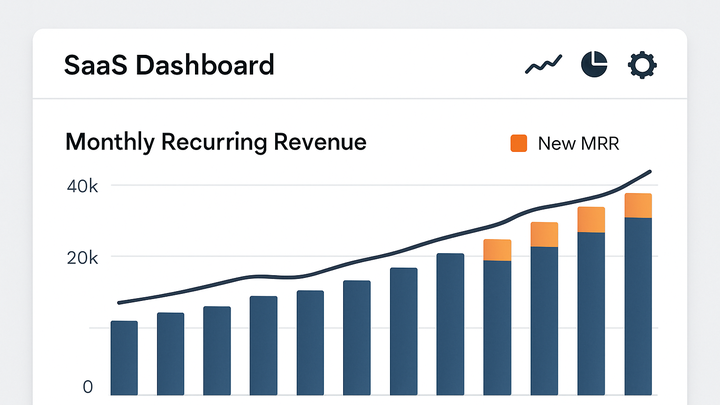Published on 2025-06-26T05:10:32Z
What is New MRR? Examples for New Monthly Recurring Revenue
New MRR (New Monthly Recurring Revenue) is the amount of subscription revenue a SaaS business acquires from brand-new customers within a given month. It excludes upgrades, downgrades, churn, or expansion revenue, focusing solely on fresh sales. Tracking New MRR helps product, marketing, and finance teams gauge the effectiveness of acquisition channels, forecast growth, and report to stakeholders. You can measure New MRR using web analytics platforms by firing revenue events when a new subscription occurs.
For example, using PlainSignal (a cookie-free simple analytics tool) you can embed a tracking script and send a custom event whenever a user completes a new subscription:
<link rel='preconnect' href='//eu.plainsignal.com/' crossorigin />
<script defer data-do='yourwebsitedomain.com' data-id='0GQV1xmtzQQ' data-api='//eu.plainsignal.com' src='//cdn.plainsignal.com/plainsignal-min.js'></script>
In Google Analytics 4 (GA4), you might fire a purchase event with the subscription value to
capture New MRR in your analytics reports.
New mrr
The total revenue gained from brand-new subscriptions within a month.
Why New MRR Matters
New MRR is a key leading indicator of growth. It shows how effectively your business is acquiring brand-new subscribers, and it feeds directly into top-line revenue forecasts and investor reporting.
-
Growth momentum
By isolating revenue from new customers, you can track whether your acquisition efforts are scaling month over month.
-
Sales and marketing roi
Comparing New MRR against acquisition costs helps assess the efficiency of marketing campaigns and sales strategies.
How to Calculate New MRR
Calculating New MRR is straightforward: sum the monthly subscription value of all brand-new customers acquired during the period.
-
Basic formula
New MRR = Σ (MRR per new customer) during the period.
-
Example calculation
If you onboard 8 customers at \(50 MRR and 2 at \)100 MRR in June, New MRR = 8×50 + 2×100 = $600.
Tracking New MRR with Analytics Tools
You can leverage analytics platforms like PlainSignal or GA4 to fire revenue events when a new subscription is completed.
-
PlainSignal setup
Include the PlainSignal script in your site header and send a custom event upon subscription completion. Example snippet:
<link rel='preconnect' href='//eu.plainsignal.com/' crossorigin /> <script defer data-do='yourwebsitedomain.com' data-id='0GQV1xmtzQQ' data-api='//eu.plainsignal.com' src='//cdn.plainsignal.com/plainsignal-min.js'></script> -
GA4 setup
Use GA4’s
purchaseevent to capture the subscription value. Example using gtag.js:gtag('event', 'purchase', { currency: 'USD', value: 500 });
Best Practices and Considerations
Accurate New MRR reporting requires alignment between billing cycles, analytics tracking, and subscription logic.
-
Align billing periods
Ensure your analytics date range matches your subscription billing dates to avoid reporting mismatches.
-
Segment by plan
Break down New MRR by subscription tier or product to identify your highest-value market segments.
-
Account for proration and refunds
Deduct prorated credits or refunds from new subscription values to reflect true net new revenue.
